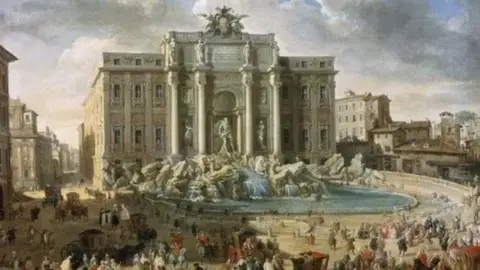Rome to regulate Trevi Fountain queues after restoration

 getty images
getty imagesRome’s world-famous Trevi Fountain has reopened after three months of repairs.
Built in the 18th century by Italian architect Nicola Salvi on the façade of the Poli Palace, the historic fountain is one of the most visited places in the city.
Between 10,000 and 12,000 tourists used to visit the Trevi Fountain every day, but a new queuing system has been installed to prevent large crowds gathering near the historic site.
Speaking on Sunday, Rome Mayor Roberto Gualtieri said imposing the limit would “allow everyone to better enjoy the fountain without crowds or confusion”.
Gualtieri also said that city officials are considering charging a modest admission fee to maintain the fountain.
The re-inauguration on Sunday took place amid light rain in the presence of several hundred tourists, many of whom followed the mayor by throwing a coin into the fountain.
The three-month cleanup project included removing layers of mold and calcium.
Fountains and other major sites in the city have been cleaned ahead of the Roman Catholic Church’s Jubilee, which begins on Christmas Eve.
 getty images
getty imagesits structural condition was poor It was exposed in 2012 when pieces of its elaborate cornice began falling off. Especially after a harsh winter which required a multi-million euro renovation the following year.
Making wishes and tossing coins into the water is a tradition that brought in around €10,000 (£8,300; $10,500) per week for city officials.
The money was donated to a charity that provides food for the poor.
Trevi Fountain
 getty images
getty images- Commissioned by Pope Clement XII in 1730
- It is the end point of one of the aqueducts that supplied water to ancient Rome.
- The Acqua Vergine runs for a total of 20 km (12 mi) before flowing into the fountain.
- Tourists can drink water from a special tap installed on one side
- According to legend, the water source was discovered by a young virgin by thirsty Roman soldiers in 19 BC – which is why it is called the Virgin Waters.
- The tradition of throwing coins into the fountain was made famous by Frank Sinatra’s Three Coins in the Fountain in the 1954 romantic comedy of the same name.






